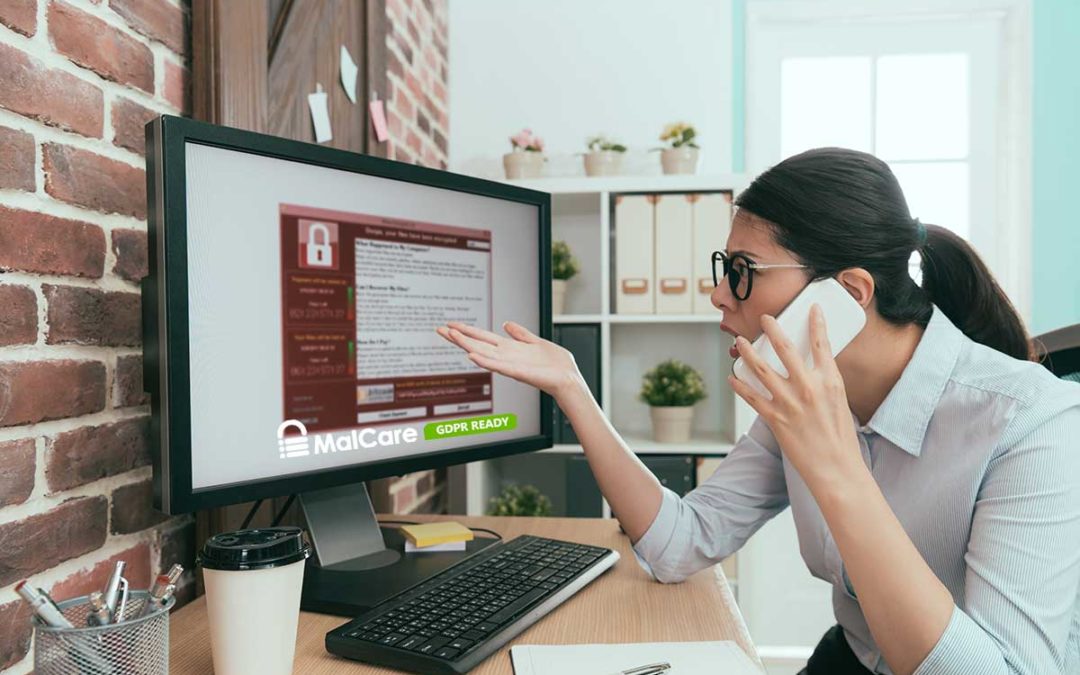Hacked Website – Here’s How to Clean It!
How to Remove Malware from Your Compromised Website?
Did you know? The average cost of a data breach in 2018 has increased by 6.4% globally to $3.86 billion.
With more and more websites being built every day, cybercrime is on the rise. Hundreds and thousands of websites are being hacked each day regardless of how big or small the websites are. Unlike popular belief, small websites are often the target because they take their security leniently.
While this may seem like a dark and gloomy situation for website owners, it’s not all bad. To curb the rate of cybercrimes, many WordPress security plugins have been built. These plugins can protect your site from hack attempts, scan it on a regular basis and upon finding malware or virus, they can even clean the site.
In this article, we look at ways to remove malware from your site and thoroughly clean your site.
How Do I Clean My Hacked Website from Malware?
Listed below are some of the common manual methods that WordPress users carry out to scan and remove malware from a compromised website. We will also see the limitations of using each of these methods.
- Signature Matching
Each malware variant has a unique signature pattern. Malware scanning tools try to match each of your infected website files against the malware signature to see if any of them match. If the tool finds any match, it sends out an alert notifying the website user of the malware infection.
Limitation: This method works only for known malware signatures and cannot detect new malware variants with relatively unknown signatures.
- Keywords
Another common method of detecting malware is to search keywords such as “eval” or “base64_” that are usually found in the malware code.
Limitation: While some malware code does use such keywords, other malware variants do not use common keywords at all! Besides, such keywords can be used by “good” code as well. This method will not work for all types of malware attacks and will result in a high number of false positives.
- WordPress File Differences
Another technique used by malware tools is to compare the WordPress core files (in the infected website) with the core files found on the official WordPress repository and report differences if any.
Limitation: This method is quite effective as long as the core files of the same WordPress version are being compared. However, a major flaw is that malware does not necessarily infect only the core files in any WordPress installation. It can also infiltrate other files and folders.
- Modified Files
This method comprises checking for malware in newly uploaded files or files modified in the previous 7 days (to a maximum of 30 days). This method is effective, especially when you have not uploaded or modified any website file in recent times.
Limitation: Malware infections can easily change (or reset) the date and time stamp of their infected files. This makes it very difficult to know when your website files have been modified.
- Unknown Files and Folders
Many malware tools look for malware infections in unknown or hidden files (and folders) in your WordPress installation. Hackers often target root folders like the public_html folder as most WordPress users don’t use this folder regularly. Other WordPress folders targeted by hackers include the /wp-content/plugins folder (that contains installed plugins) and the /wp-content/themes folder (that contains installed themes).
Limitation: Most third-party plugins and themes come with their own set of extra files and folders that can be targeted during malware attacks.
Each of these malware scanning and removal methods are effective for only certain types of attacks. Which is why they cannot be reliably deployed for detecting every malware variant.
So, how can you ensure that your compromised website is completely rid of malware, irrespective of the type of attack? The key is through a comprehensive security solution, such as a dedicated WordPress security plugin.
Let’s now discuss how WordPress security plugins are useful in cleaning malware and exactly how you can use them to clean your website from malware.
What Are WordPress Security Plugins?
Easy to install, just like any other WordPress plugin, security plugins can be used to protect and guard your WordPress website against a variety of malware attacks. With features like 24×7 malware detection, firewall protection, and easy malware cleaning, a WordPress security plugin like MalCare overcomes all the limitations of conventional malware detection and cleaning processes. The best part about tools like MalCare is that it can be easily used by even a novice WordPress user to remove malware with automated offerings like a one-click solution to clean an infected site.
Sounds interesting? Let’s now see how easily you can use the MalCare tool to remove malware from your website. But before that, let’s understand the importance of taking a website backup before performing the clean-up operation.
Why Take a Backup of Your WordPress Website?
Imagine a data breach on your website where you end up losing all your valuable business data. For an E-commerce website, this could mean a loss of data like online orders, shipments, invoices, and product details. This could seriously hamper your business operations for some time, along with the loss of customer trust.
Taking a backup of your website’s files and database and storing it at an independent location will ensure that you never lose any data. Thus, in the event of a hack or compromise, you can restore your site quickly using the stored data backup.
Backups are also useful when it comes to cleaning malware from your site. It ensures that even if you delete or overwrite a file during the clean-up, you can quickly restore it.
Taking a backup of your site is actually very easy. There are tools available in the market like BlogVault that simplify the whole process for you.
How to Clean a Hacked Website Using a WordPress Security Plugin
While there are plenty of security plugins that’ll help you clean a hacked site, they take long turnaround times ranging from hours to days. So choosing the right one can make a significant difference. Let’s see how to remove malware from your site using MalCare because it’s the only plugin that allows you to auto-clean a site on your own.
To use MalCare, you need to sign up and then install the plugin on your website. Once activated, it runs a scan immediately. If malware is detected, it reports what it has found. Click on ‘Auto-clean’ and the plugin will run the cleaning process on its own. Once done, it notifies you that your site is malware-free.

In Conclusion
The increasing number and complexities of malware attacks each year is adding to the security-related concerns of WordPress website owners. There is no assured guarantee that a malware attack won’t compromise your website (regardless of whether it’s big or small). In such a scenario, your best guard is to invest in a WordPress security tool that can completely clean and restore your website in no time.





